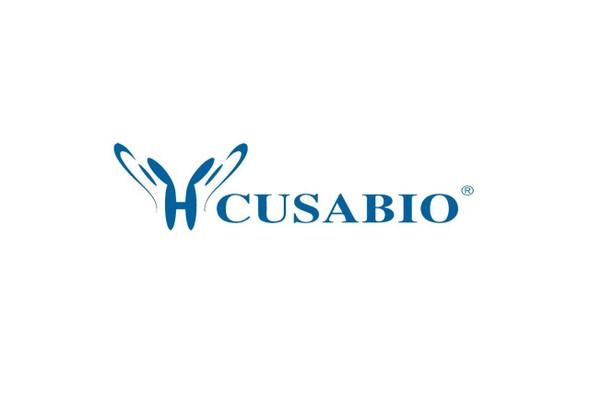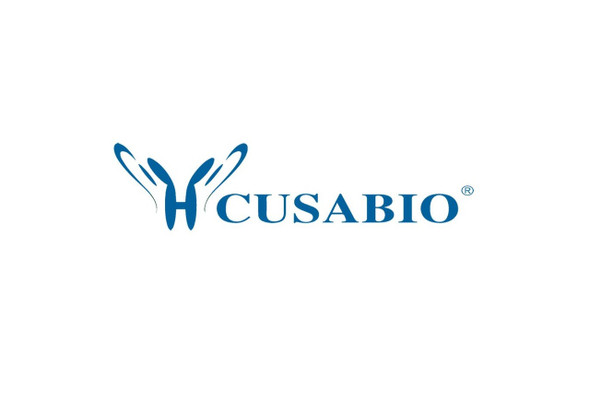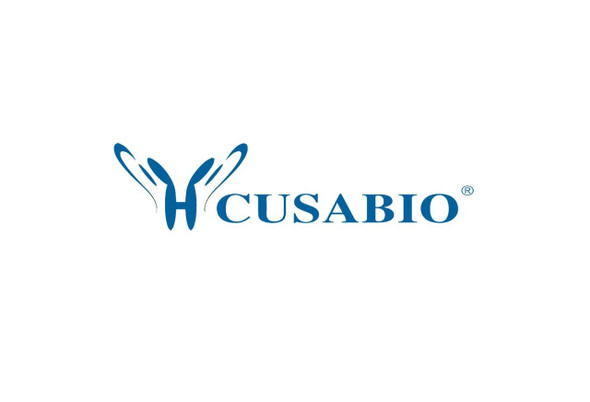Cusabio Human Recombinants
Recombinant Human Bile acid receptor (NR1H4) | CSB-EP839406HU
- SKU:
- CSB-EP839406HU
- Availability:
- 13 - 23 Working Days
Description
Recombinant Human Bile acid receptor (NR1H4) | CSB-EP839406HU | Cusabio
Alternative Name(s): Farnesoid X-activated receptorFarnesol receptor HRR-1Nuclear receptor subfamily 1 group H member 4Retinoid X receptor-interacting protein 14 ;RXR-interacting protein 14
Gene Names: NR1H4
Research Areas: Transcription
Organism: Homo sapiens (Human)
AA Sequence: MGSKMNLIEHSHLPTTDEFSFSENLFGVLTEQVAGPLGQNLEVEPYSQYSNVQFPQVQPQISSSSYYSNLGFYPQQPEEWYSPGIYELRRMPAETLYQGETEVAEMPVTKKPRMGASAGRIKGDELCVVCGDRASGYHYNALTCEGCKGFFRRSITKNAVYKCKNGGNCVMDMYMRRKCQECRLRKCKEMGMLAECMYTGLLTEIQCKSKRLRKNVKQHADQTVNEDSEGRDLRQVTSTTKSCREKTELTPDQQTLLHFIMDSYNKQRMPQEITNKILKEEFSAEENFLILTEMATNHVQVLVEFTKKLPGFQTLDHEDQIALLKGSAVEAMFLRSAEIFNKKLPSGHSDLLEERIRNSGISDEYITPMFSFYKSIGELKMTQEEYALLTAIVILSPDRQYIKDREAVEKLQEPLLDVLQKLCKIHQPENPQHFACLLGRLTELRTFNHHHAEMLMSWRVNDHKFTPLLCEIWDVQ
Source: E.coli
Tag Info: N-terminal 6xHis-SUMO-tagged
Expression Region: 1-476aa
Sequence Info: Full Length of Isoform 3
MW: 70.7 kDa
Purity: Greater than 90% as determined by SDS-PAGE.
Relevance: Ligand-activated transcription factor. Receptor for bile acids such as chenodeoxycholic acid, lithocholic acid and deoxycholic acid. Represses the transcription of the cholesterol 7-alpha-hydroxylase gene (CYP7A1) through the induction of NR0B2 or FGF19 expression, via two distinct mechanisms. Activates the intestinal bile acid-binding protein (IBABP). Activates the transcription of bile salt export pump ABCB11 by directly recruiting histone methyltransferase CARM1 to this locus
Reference: The finished DNA sequence of human chromosome 12.Scherer S.E., Muzny D.M., Buhay C.J., Chen R., Cree A., Ding Y., Dugan-Rocha S., Gill R., Gunaratne P., Harris R.A., Hawes A.C., Hernandez J., Hodgson A.V., Hume J., Jackson A., Khan Z.M., Kovar-Smith C., Lewis L.R. , Lozado R.J., Metzker M.L., Milosavljevic A., Miner G.R., Montgomery K.T., Morgan M.B., Nazareth L.V., Scott G., Sodergren E., Song X.-Z., Steffen D., Lovering R.C., Wheeler D.A., Worley K.C., Yuan Y., Zhang Z., Adams C.Q., Ansari-Lari M.A., Ayele M., Brown M.J., Chen G., Chen Z., Clerc-Blankenburg K.P., Davis C., Delgado O., Dinh H.H., Draper H., Gonzalez-Garay M.L., Havlak P., Jackson L.R., Jacob L.S., Kelly S.H., Li L., Li Z., Liu J., Liu W., Lu J., Maheshwari M., Nguyen B.-V., Okwuonu G.O., Pasternak S., Perez L.M., Plopper F.J.H., Santibanez J., Shen H., Tabor P.E., Verduzco D., Waldron L., Wang Q., Williams G.A., Zhang J., Zhou J., Allen C.C., Amin A.G., Anyalebechi V., Bailey M., Barbaria J.A., Bimage K.E., Bryant N.P., Burch P.E., Burkett C.E., Burrell K.L., Calderon E., Cardenas V., Carter K., Casias K., Cavazos I., Cavazos S.R., Ceasar H., Chacko J., Chan S.N., Chavez D., Christopoulos C., Chu J., Cockrell R., Cox C.D., Dang M., Dathorne S.R., David R., Davis C.M., Davy-Carroll L., Deshazo D.R., Donlin J.E., D'Souza L., Eaves K.A., Egan A., Emery-Cohen A.J., Escotto M., Flagg N., Forbes L.D., Gabisi A.M., Garza M., Hamilton C., Henderson N., Hernandez O., Hines S., Hogues M.E., Huang M., Idlebird D.G., Johnson R., Jolivet A., Jones S., Kagan R., King L.M., Leal B., Lebow H., Lee S., LeVan J.M., Lewis L.C., London P., Lorensuhewa L.M., Loulseged H., Lovett D.A., Lucier A., Lucier R.L., Ma J., Madu R.C., Mapua P., Martindale A.D., Martinez E., Massey E., Mawhiney S., Meador M.G., Mendez S., Mercado C., Mercado I.C., Merritt C.E., Miner Z.L., Minja E., Mitchell T., Mohabbat F., Mohabbat K., Montgomery B., Moore N., Morris S., Munidasa M., Ngo R.N., Nguyen N.B., Nickerson E., Nwaokelemeh O.O., Nwokenkwo S., Obregon M., Oguh M., Oragunye N., Oviedo R.J., Parish B.J., Parker D.N., Parrish J., Parks K.L., Paul H.A., Payton B.A., Perez A., Perrin W., Pickens A., Primus E.L., Pu L.-L., Puazo M., Quiles M.M., Quiroz J.B., Rabata D., Reeves K., Ruiz S.J., Shao H., Sisson I., Sonaike T., Sorelle R.P., Sutton A.E., Svatek A.F., Svetz L.A., Tamerisa K.S., Taylor T.R., Teague B., Thomas N., Thorn R.D., Trejos Z.Y., Trevino B.K., Ukegbu O.N., Urban J.B., Vasquez L.I., Vera V.A., Villasana D.M., Wang L., Ward-Moore S., Warren J.T., Wei X., White F., Williamson A.L., Wleczyk R., Wooden H.S., Wooden S.H., Yen J., Yoon L., Yoon V., Zorrilla S.E., Nelson D., Kucherlapati R., Weinstock G., Gibbs R.A.Nature 440:346-351(2006)
Storage: The shelf life is related to many factors, storage state, buffer ingredients, storage temperature and the stability of the protein itself. Generally, the shelf life of liquid form is 6 months at -20?/-80?. The shelf life of lyophilized form is 12 months at -20?/-80?.
Notes: Repeated freezing and thawing is not recommended. Store working aliquots at 4? for up to one week.
Function: Ligand-activated transcription factor. Receptor for bile acids (BAs) such as chenodeoxycholic acid (CDCA), lithocholic acid, deoxycholic acid (DCA) and allocholic acid (ACA). Plays a essential role in BA homeostasis through the regulation of genes involved in BA synthesis, conjugation and enterohepatic circulation. Also regulates lipid and glucose homeostasis and is involved innate immune response
Involvement in disease: Cholestasis, progressive familial intrahepatic, 5 (PFIC5)
Subcellular Location: Nucleus, SUBCELLULAR LOCATION: Isoform 1: Nucleus, SUBCELLULAR LOCATION: Isoform 2: Nucleus, SUBCELLULAR LOCATION: Isoform 3: Nucleus, SUBCELLULAR LOCATION: Isoform 4: Nucleus
Protein Families: Nuclear hormone receptor family, NR1 subfamily
Tissue Specificity: Liver and hepatocyte-related cells express mainly FXRalpha1-type isoforms with isoform 3 and isoform 4 in approximately equal proportions. In intestine and kidney mainly FXRalpha2-type isoforms are expressed with isoform 1 and isoform 2 in approximately equal proportions. Expressed in pancreatic beta cells and macrophages.
Paythway:
Form: Liquid or Lyophilized powder
Buffer: If the delivery form is liquid, the default storage buffer is Tris/PBS-based buffer, 5%-50% glycerol. If the delivery form is lyophilized powder, the buffer before lyophilization is Tris/PBS-based buffer, 6% Trehalose, pH 8.0.
Reconstitution: We recommend that this vial be briefly centrifuged prior to opening to bring the contents to the bottom. Please reconstitute protein in deionized sterile water to a concentration of 0.1-1.0 mg/mL.We recommend to add 5-50% of glycerol (final concentration) and aliquot for long-term storage at -20?/-80?. Our default final concentration of glycerol is 50%. Customers could use it as reference.
Uniprot ID: Q96RI1
HGNC Database Link: HGNC
UniGene Database Link: UniGene
KEGG Database Link: KEGG
STRING Database Link: STRING
OMIM Database Link: OMIM









